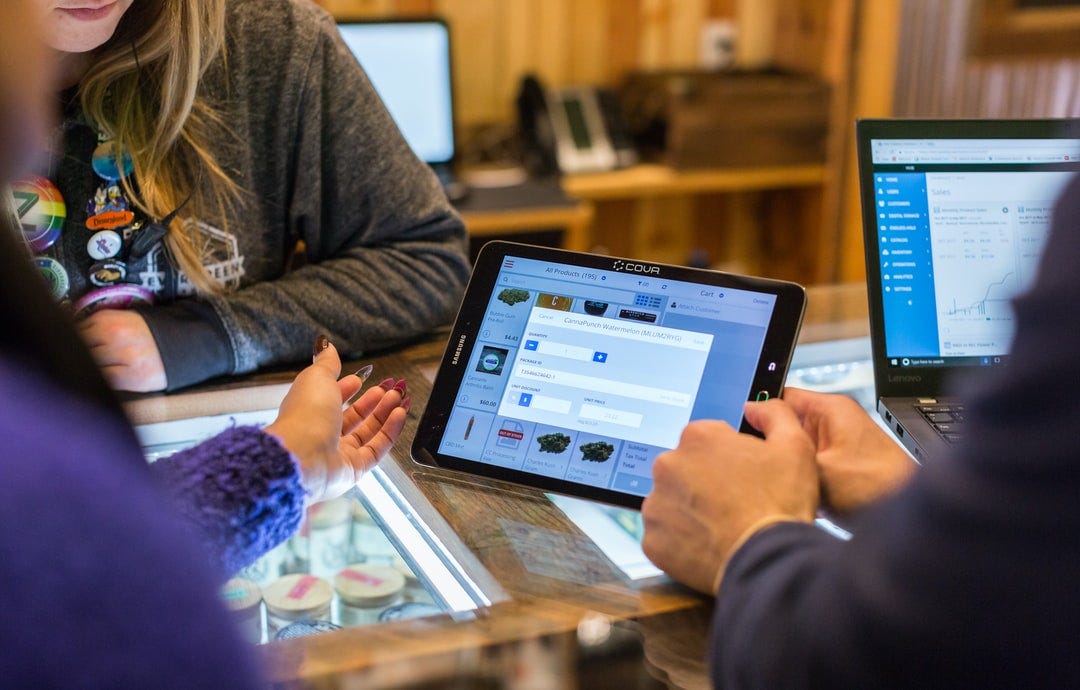In business, procurement is the process of acquiring goods or services. It is a strategic process that begins with identifying what is needed and ends with the receipt and approval of the goods or services.
For example, in a supply chain context, procurement is the link between manufacturing and supply. It includes activities such as sourcing, contracting, and supplier management.
This entails locating suppliers, haggling over terms, paying for the goods or services, and frequently organizing a competitive sourcing event to choose the supplier who will best serve your business’ needs.
Despite appearing simple, the function of procurement is far more intricate and sophisticated than most people realize. For virtually as long as commerce has existed, procurement has been an essential, transactional component of doing business.
The practice of carefully choosing and acquiring the items and services required for day-to-day company operations is as crucial as ever, even if the days of scribes keeping account of transactions on papyrus scrolls are long gone.
When you start a business from scratch, it’s easy to source the products and services you need from a single supplier. But as your company grows, you may find that working with multiple vendors is more efficient and cost-effective.
Procurement may have a direct influence on the bottom line by helping the business to consistently obtain the materials it requires at the lowest cost. In this article, we’ll discuss the following:
What Is Procurement?
A variety of tasks related to purchasing products or services are included in procurement. What does procurement provide as a means for? In general, procurement teams search for suppliers with the best value at fair prices.
Procurement isn’t universally defined by businesses, though. While some businesses describe procurement as a more limited set of tasks, such as issuing purchase orders and processing payments, others define it as all the steps, from gathering business needs and locating suppliers to tracking the delivery of products and adjusting payment conditions.
This is a crucial part of resource allocation as it encompasses the acquisition of necessary goods and services to achieve organizational objectives. It is also a complex process that can be further broken down into five key stages:
3 Stages of Procurement
Procurement involves three distinct stages that must be managed to deliver the best possible outcome for an organization.
1. Requirements Gathering
The first stage of procurement is identifying what goods or services are needed. The process of defining the specifications for the desired products or services is called requirements gathering.
Businesses need to be as specific as possible when documenting requirements to ensure that they get exactly what they need from suppliers. After the requirements have been gathered, businesses can begin sourcing suppliers.
You can also utilize shared services within your company to handle this process for you. Shared services are a team of experts who provide support for procurement and other activities within an organization.
There are several ways to locate potential suppliers, such as using an online directory, conducting a search engine query, or visiting trade shows. Once businesses have located some suppliers, they need to assess whether the supplier can meet their needs.

This assessment includes evaluating the supplier’s ability to deliver the required products or services on time and at the desired quality level, as well as verifying that the supplier is financially stable. After determining that a supplier is capable of meeting their needs, businesses can begin negotiating terms with the supplier.
2. Contracting
The next stage of procurement is contracting, which is when businesses formalize their agreement with the supplier. The contract should include all the terms that have been negotiated, such as price, delivery date, and quality standards.
It’s important to have a well-written contract that clearly delineates the responsibilities of each party to avoid misunderstandings or disputes down the road. After the contract has been signed, businesses can begin placing orders with the supplier. Documentation is very important in this stage, as it can help to resolve any disputes that may arise
3. Monitoring and Tracking
The final stage of procurement is monitoring and tracking. This involves keeping track of whether products or services are delivered on time and meet the quality standards specified in the contract. It also involves monitoring spending to ensure that it stays within the budgeted amount.
If there are any problems with the supplier’s performance, businesses can take corrective action, up to and including terminating the contract.
Types of Procurement
There are several subcategories of procurement. Depending on how the organization intends to use the things being purchased, it can be categorized as either direct or indirect procurement. Depending on the commodities that are being acquired, it may also be classified as either goods or services procurement.
1. Direct Procurement
Direct procurement is the simplest form of procurement. In this case, the organization purchases the commodities it needs from suppliers and sells them to customers. The organization does not add any value to the products; it simply buys and sells them. This type of procurement is common in retail businesses.
This covers raw materials and components for a manufacturer. Any products a retailer buys from a wholesaler to sell to clients are included. Some organizations may use this type of procurement for office supplies as well.
In this type of procurement, a process called procure-to-pay is usually followed. This means that the organization has a responsibility to pay the supplier for the products or services received.
2. Indirect Procurement
Indirect procurement is a more complex form of procurement in which the organization not only purchases commodities from suppliers but also transforms them in some way before selling them to customers.
The organization adds value to the products by performing some sort of manufacturing or assembly process. This type of procurement is common in manufacturing businesses. An example would be a company that buys tires and assembles them into complete wheels.
3. Goods Procurement
Goods procurement is the acquisition of physical commodities. This can include anything from office supplies to raw materials for manufacturing. In some cases, the organization may resell the goods it purchases without adding any value.
In other cases, the organization may use the goods as part of a more complex production process. For supply chains in the manufacturing industry, the final product may be a combination of goods from different suppliers. The organization itself is responsible for putting these together into a finished product.

4. Services Procurement
Services procurement is the acquisition of intangible services rather than physical commodities. These services can be provided by individuals or organizations. They can be one-time services, such as consulting services, or they can be ongoing services, such as janitorial services.
For example, BPO services are often used to handle non-core business activities like accounting or customer service. This frees up the organization’s own resources so that they can focus on more important tasks.
What’s The Difference Between Purchasing And Procurement?
Purchasing is the act of buying goods or services. Procurement is the process of sourcing and acquiring goods or services. In other words, purchasing is a small part of procurement. Basically, procurement is the strategic process that an organization uses to obtain goods or services.
For example, an organization might use procurement to get the best price for raw materials. The organization would work with suppliers to get the best quality goods at the lowest possible price. The organization would also put systems and processes in place to make sure that the goods are delivered on time and meet all quality standards.

In this case, the purchasing department would be responsible for executing the procurement strategy. The purchasing department would work with suppliers to get quotes, place orders, and track deliveries.
Procurement is a more holistic process that includes everything from identifying needs to post-purchase follow-up. Purchasing is a narrower function that focuses on placing orders and tracking deliveries.
Both are vital when allocating resources in an organization as they help to ensure that goods and services are sourced and acquired in a cost-effective and efficient manner.
What Is A Purchase Order?
A purchase order (PO) is a document that an organization sends to a supplier to request goods or services. The PO outlines the terms of the transaction, including a description of the commodities being purchased, the price per unit, the quantity being ordered, and the date or timeframe for delivery.
Once the supplier receives the PO, they will usually send back an acknowledgment confirming their ability to provide the requested goods or services within the specified timeframe. Once both parties have agreed to all terms, the supplier will begin work and the purchasing department will begin making payments according to the terms of the PO.
A purchase order is a contract between an organization and a supplier. It’s important to have a PO in place before work begins so that both parties understand the terms of the agreement and can avoid any misunderstandings later on. There are several types of Purchase Orders:
1. Standard Purchase Order: This is the most common type of PO. It’s used for simple transactions in which the organization is purchasing goods or services that are already well-defined.
2. Blanket Purchase Order: This type of PO is often used when an organization needs to purchase a large quantity of goods or services over a period of time. The order defines the overall terms of the agreement, but the specifics (such as price and quantity) can be negotiated on an as-needed basis.
3. Master Purchase Order: This type of PO is used when an organization has a standing agreement with a supplier for regular deliveries of goods or services.
4. Standing Purchase Order: This type of PO is similar to a master purchase order, but it’s used for onetime or infrequent purchases.
5. Contract Purchase Order: This type of PO is used when an organization is contracting with a supplier for a specific project. It outlines the terms of the agreement and can be used as a legally binding contract.
9 Core Steps For Procurement
We’ve mentioned the 3 main stages of procurement earlier (requirements gathering, contracting, and monitoring and tracking). However, within these steps, there are 9 core smaller ones that you need to be aware of to make sure your procurement process is as smooth and efficient as possible. Here they are:
1. Defining the requirement
A company must first determine what it needs in terms of a certain product or service. This might be a new product that the business has never acquired before, a replenishment of current inventory, or a subscription renewal.
This stage usually entails getting down to the specifics of what the company needs, such as the exact technical requirements, materials, part numbers, or service qualities.
To make sure the purchased products appropriately reflect the demands of each department, it’s a good idea to discuss all company departments that may be impacted by the choice.

2. Developing the sourcing strategy
The next stage is to develop a sourcing strategy. This includes figuring out where to source the required goods or services, whether it be from domestic or international suppliers, and what type of supplier relationship the company wants to establish.
The goal here is to find a balance between cost, quality, and risk. Other considerations might also come into play, such as sustainability or ethical factors. For example, a business might want to buy local to support the economy or reduce its carbon footprint.
3. Conducting market research
After the company understands its requirements and has developed a sourcing strategy, it’s time to start conducting market research. The goal is to find potential suppliers that can provide the goods or services required at a reasonable price and quality level.
This might involve attending trade shows, searching online directories, or reading industry publications. Once a list of potential suppliers has been compiled, the next step is to narrow down the selection by evaluating each one’s strengths and weaknesses.
It’s like recruitment but in this case, you’re looking for a supplier that’s the best fit for your company.
4. Requesting quotes
Once the company has selected a few potential suppliers, it’s time to request quotes. The goal is to get an idea of how much the desired goods or services will cost from each supplier. To do this, the company provides the suppliers with a list of requirements and asks them to provide a price estimate.
It’s important to remember that the lowest quote isn’t necessarily the best option, as quality and other factors need to be taken into account. Cutting costs is one of the main objectives of the procurement process, but it’s not the only one.
5. Selecting the supplier
After evaluating all the quotes, it’s time to select the supplier that will provide the goods or services required. The decision might be based purely on cost, or a combination of cost and other factors, such as quality, delivery times, or sustainability.
Once the decision has been made, the company can start negotiating with the chosen supplier to finalize the details of the deal. Supplier power is an important consideration during this stage, as the company will want to get the best possible terms. It is included in Porter’s Five Forces analysis model for this reason.

6. Drafting and signing the contract
The next step is to draft and sign a contract with the chosen supplier. The contract should include all the details of the agreement, such as price, delivery times, quality standards, and any other relevant clauses. It’s important to make sure that both parties are happy with the terms of the contract before signing it.
7. Managing the supplier
After the contract has been signed, it’s time to start managing the supplier. This includes making sure that they meet all the requirements laid out in the contract, such as delivery times and quality standards. The company should also establish a good relationship with the supplier, as this can help to encourage future cooperation.
As a manager, you don’t necessarily just manage your team, but also have to oversee the work of external suppliers. This is especially important in procurement, as you’re responsible for making sure that the company gets the best possible value for money.
8. Monitoring and tracking
Once the goods or services have been delivered, it’s important to monitor and track them to make sure they meet all the requirements specified in the contract. This might involve conducting regular audits or reviews of the supplier’s performance.
If any problems are discovered, they should be communicated to the supplier so that they can be rectified. A good line of communication between buyer and supplier is essential for maintaining a successful partnership.
9. Evaluating the results
After the procurement process has been completed, it’s important to evaluate the results. This includes assessing whether all the objectives have been met, such as cost savings or quality improvements. It’s also a good idea to review the entire process to identify any areas that could be improved for future procurement.
Final Thoughts
As you can see, procurement is a complex process with many steps. However, by following these steps, you can be sure that your company will get the best possible value for its money. There are many benefits to procurement, such as cost savings and quality improvements. It takes careful planning and execution to make sure it is successful.
Overall, procurement is a very important part of any business and should be given the attention it deserves. It provides many benefits but can also be very risky if not done correctly. Imagine if your company spent millions of dollars on a new product only to find out that it didn’t meet the needs of your customers!
Procurement is a process that all businesses should take seriously, and we hope this article has given you a better understanding of what it entails. Whether you are just starting out or have been in business for years, understanding procurement is essential to your success.
